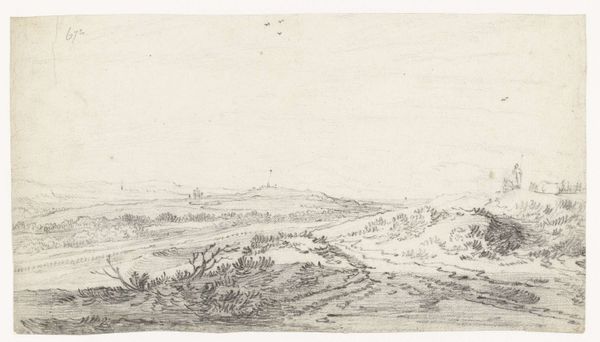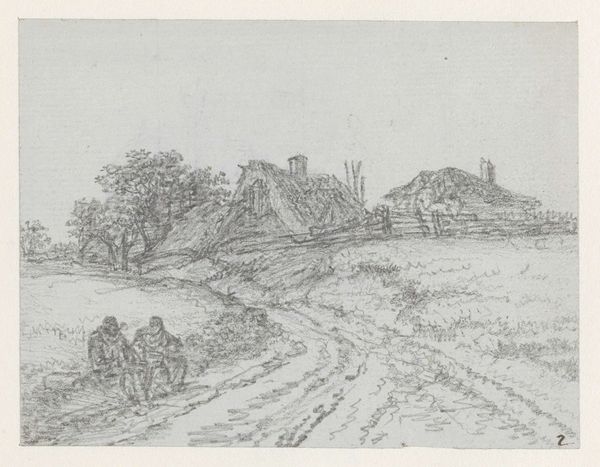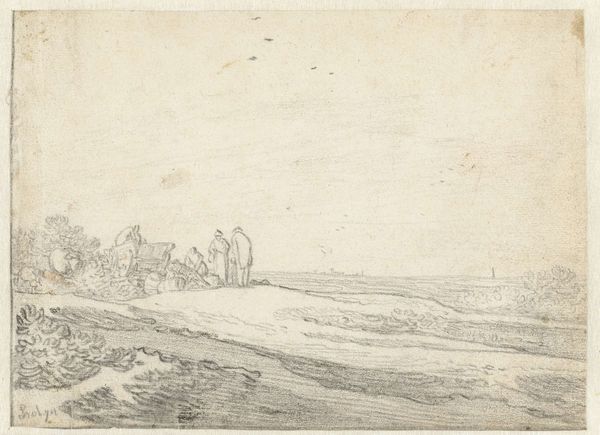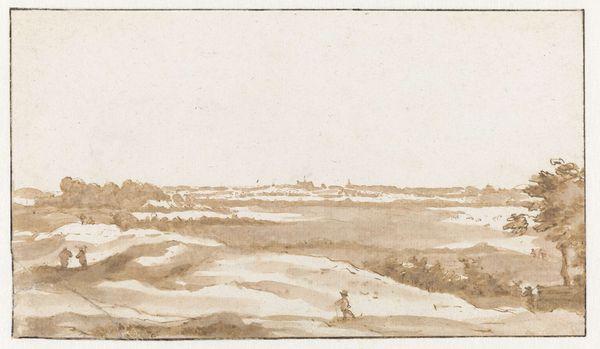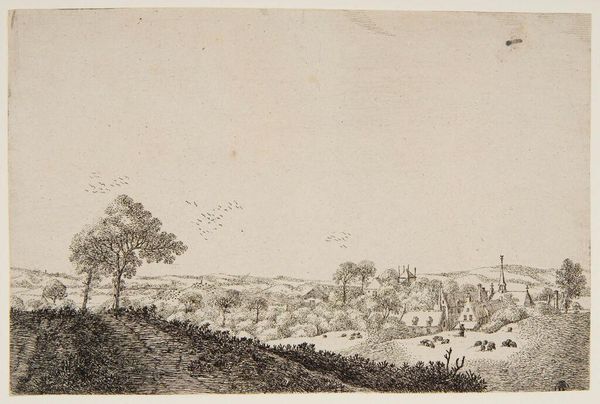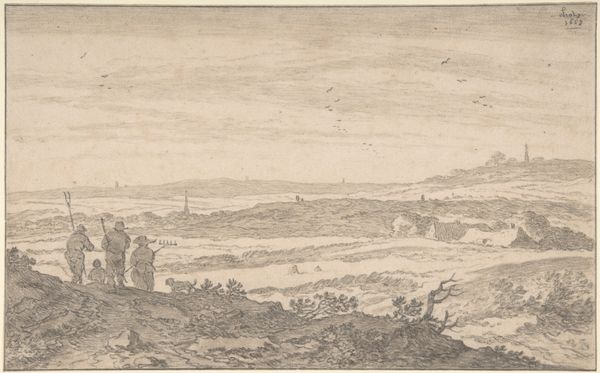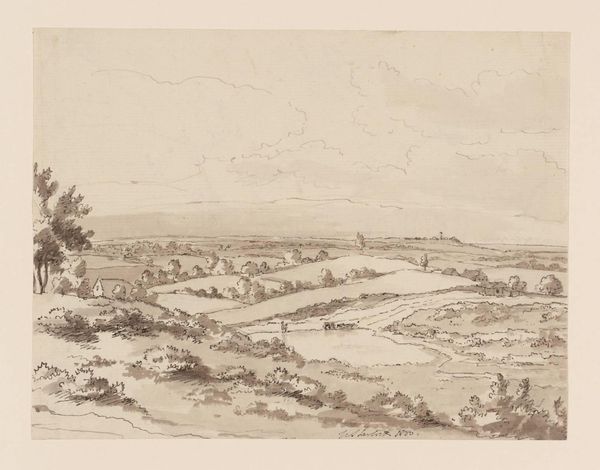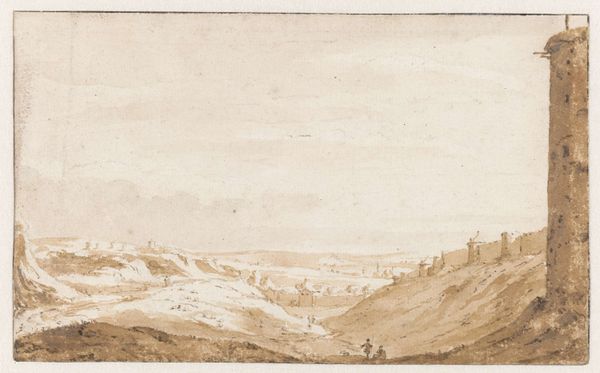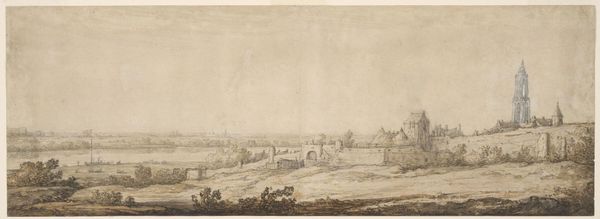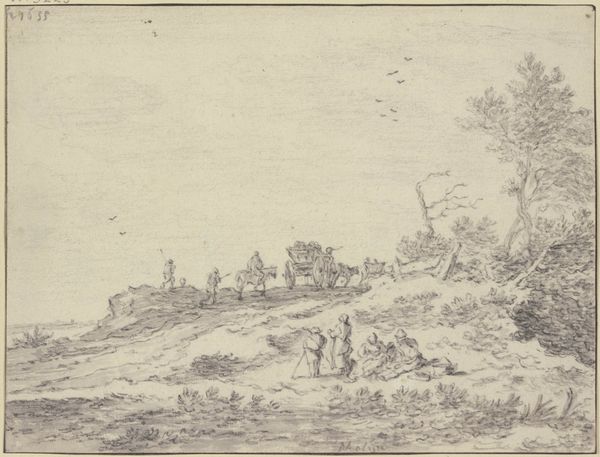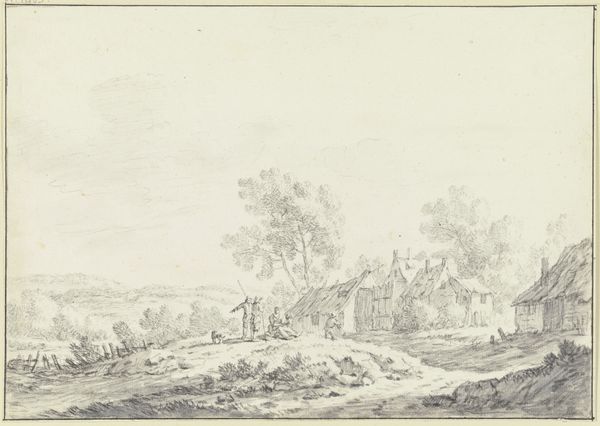
drawing, pencil
#
drawing
#
dutch-golden-age
#
landscape
#
pencil
#
genre-painting
#
realism
Dimensions: height 145 mm, width 196 mm
Copyright: Rijks Museum: Open Domain
Curator: Here we have "Heuvellandschap met een wagen en een kar," or "Hilly Landscape with a Wagon and Cart," created by Pieter de Molijn sometime between 1650 and 1660. The drawing, rendered in pencil, offers a glimpse into 17th-century Dutch life. Editor: My immediate impression is a certain muted stillness. The pencil strokes, though delicate, depict a working landscape, yet it evokes a sense of quiet perseverance. It feels both mundane and profound. Curator: Absolutely. De Molijn masterfully uses the Dutch landscape as a stage to present daily life. Note how the wagons and figures traversing the hill seem to echo humanity's enduring connection to the land, mirroring cycles of labor and resilience deeply embedded in cultural memory. The landscape isn’t just background; it’s imbued with symbolic meaning. Editor: And look at the means of production: a humble pencil rendering this scene. We can trace the artist’s hand, each line deliberate in its effort to portray the movement of carts and the subtle changes in terrain. How fascinating to consider the relationship between the cost of materials, the time taken for its creation, and its depiction of labour. The humble nature of the medium gives this art historical value for its own sake. Curator: Indeed. The simplicity emphasizes a realism inherent to Dutch Golden Age art. I would suggest considering, too, the relationship between this genre painting and Dutch identity during a time of great social and economic transformation. What emotional or psychological comfort might the public have drawn from such seemingly ordinary, timeless imagery? Editor: I wonder what impact De Molijn was intending; did he think his depiction was something people would treasure and connect with over such great lengths of time, as we have? Curator: Perhaps. It is powerful to know that something seemingly simple may carry vast historical context, memory, and meaning for many. Editor: Yes. From humble pencil strokes arise layers of complexity reflecting 17th-century Dutch society, its working processes and collective sentiment.
Comments
No comments
Be the first to comment and join the conversation on the ultimate creative platform.
